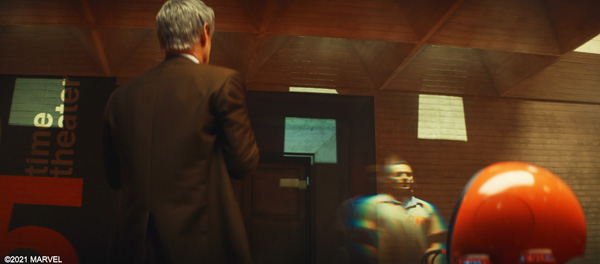
FuseFX worked on over 200 shots for Marvel’s TV series ‘Loki’ across multiple episodes and creative effects, inside the mysterious Time Variance Authority and into the worlds beyond.
Though the story is complex, winding through time as well as space, and focusses on the complicated character of Loki himself, it is also filled with fascinating visual effects, environments and characters. Viewers meet an alternate version of Loki who has been recruited by the mysterious Time Variance Authority (TVA), a bureaucratic organisation that exists outside of time and space and monitors the universal timeline.
FuseFX was invited to carry out a proof-of-concept test for ‘Loki’ in February 2020 to help visualise the motion and functionality of the Time Stage hologram inside the TVA, a major effect and story point. The test was well-received, and Fuse started work on Loki in May that year.
Work slowed somewhat when shooting was paused due to Covid, but the team kept evolving their effects and, by working remotely, continued the development process and work toward approvals. Marvel’s internal supervising VFX Supervisor on the show, Dan DeLeeuw, had also been VFX supervisor for both ‘Avengers: Endgame’ and ‘Infinity War’ feature films. “His highly organised approach made it possible to coordinate the work across many teams, and we greatly appreciated the way in which he oversaw our collaboration with Marvel,” said Wayne England, one of the VFX Supervisors working ‘Loki’ at FuseFX.
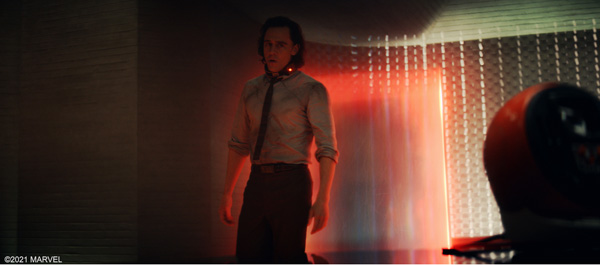
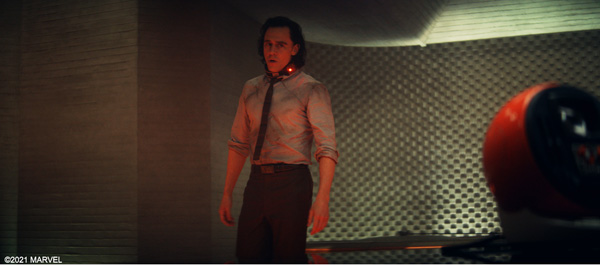
“Because many of our effects related to the show’s concept of time and the Time Variance Authority, we needed a sound understanding of ALL of the TVA’s systems, devices, effects and so on, which helped us recognise overall themes that support the unified world of the TVA’s technology. It also kept our efforts moving in the right direction, ensuring that everything worked together harmoniously as an institution.” The interiors and fixtures around the TVA have a special retro look as well, including older style IT equipment – for example, monitors with volume, not flat screens, large desks and other designs.
Time Stage Hologram
The Time Stage holographic device that FuseFX initially worked on is the main feature of the TVA’s Time Stage Theatre, a primary story location that the production had designed and built as a practical set. “Our Time Stage visualisations had been influenced by design concepts the production shared with us of the physical holographic projection device, directly beneath the space of the holographic volume,” Wayne said.
“As reference for the Time Stage in motion, we were initially directed to look into the phenomenon of murmuration, or swarm behaviour, of schools of fish and flocks of birds such as starlings that move in a mesmerising, coordinated way. From there, we experimented and evolved the motion of a comprehensive particle system in Houdini. As part of the development, the team actually coded spatial and rotational properties of quaternion mathematics into the particle system.
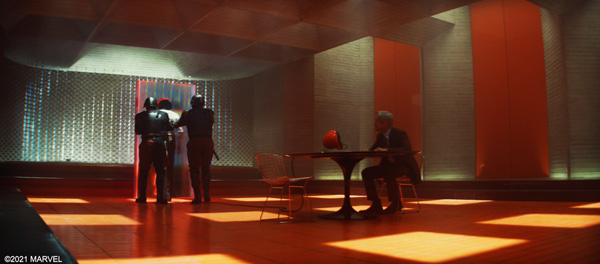
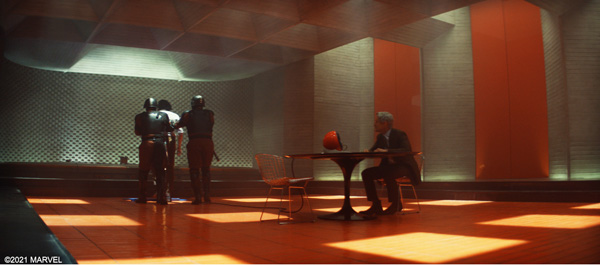
“Our artist Ashkan Arzami developed the system to establish the subtle and complex motion dynamics of the hologram. He also evolved its appearance with its transparent and refractive-reflective qualities, combined with its ability to self-illuminate for projected image representations. The hologram’s rendered presence in the Time Stage Theatre involved all kinds of obvious and subtle light reflections and illuminations with the surrounding practical set.”
Those rendered details, created using a 3D digital replica of the practical set environment, were all integrated into the compositing process where the looks were further refined. Eventually, the finished appearance of the Time Stage included many details such as monitor composites on the central table and interface display of the Time Stage device, as well as clean-up and integration of the practical set environment and of Loki, Mobius and Sylvie.
Data Sharing
Throughout the series and in most sequences, the characters travel through time via the Time Doors, a recurring effect. As people pass through the doors’ threshold, Marvel wanted to see a specific, instantly recognisable phenomenon reflecting the highest aspirations of the TVA’s technology. Wayne said, “Their development is also a good example of how the series’ vendor studios – FuseFX, ILM, Digital Domain, Method Studios and others – would share data between their teams.
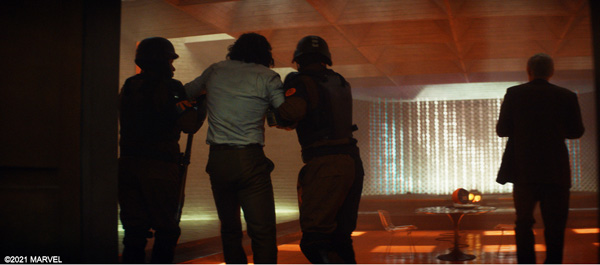
“Three studios were primarily involved in achieving the final Time Door appearance. During the development stages, work in progress would be uploaded on request to a central data repository for ‘Loki’, in which different elements from different vendors would be shared to reference and integrate. It was a very collaborative approach that saved us time and maintained consistency. The repository was closely regulated and kept secure using Marvel’s protocol. Access permissions were precise and granular to prevent leaks, making sure that artists only had access to the data they needed for their work.”
Motion Graphics
DFX Supervisor Kevin Yuille was responsible for developing Time Turner and Time Door effects and led the Nuke 2D compositing team in those efforts. The doors are largely about lighting effects – opening and closing them, for example, features chromatic aberrations. The surface textures were important at the threshold and, as the characters pass through, their volumes were used to create depth cues, refractions and edge-motion highlights.
In one of the Time Turner moments, we see Loki using a Tem-Pad – a device that monitors the TVA’s Timeline and allows users to summon Time Doors and travel through time – to repeatedly shift B-15 back and forth in time, calling for complex motion graphics effects.
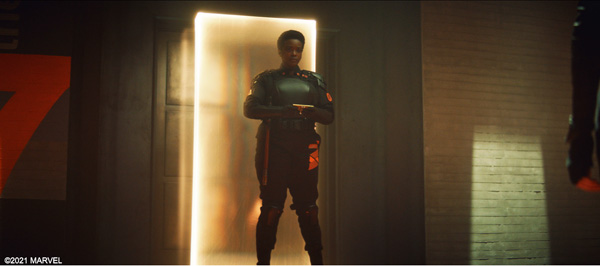
The effects draw on the source footage of B-15 moving from her scene start position, to her ending position. “By eliminating all frames and re-inserting only specific moments of her performance, we determined the fundamental timing of the effect, and then applied echos, blurs, chromatic aberration and distortion effects to these select moments with nuanced precision,” Wayne said. “Combined, all of these effects contributed to the appearance of a dynamic phenomenon that feels very real.”
Deletion
FuseFX initiated and developed the appearance and dynamic motion of an interesting deletion effect, called ‘pruning’. Three stills from a sequence of shots when Mobius, one of the main characters, is pruned were used as a template from which they explored look development via concept art. Following some back-and- forth, Marvel approved a specific look, which signalled them to move ahead with animation.
“Its overriding concept is the propagation of a wave of energy, whose leading edge moves through the volume of Mobius’ body, leaving in its wake a fast-evaporating, residual, nebula-like energy with spectral shifting colour hues,” said Wayne. “Lead Houdini artist Seung Kim evolved the visual motion dynamics and passed many layered render (AOV) elements to compositing for finishing and final appearance. Mobius’ pruning occurred within four shots, including wide shots and close-ups, revealing the details of the phenomenon in progressive stages. Developing this effect also illustrates a common VFX procedure, of submitting an initial look as a still frame and then, once approved, developing it into motion.”
Unstable Moon
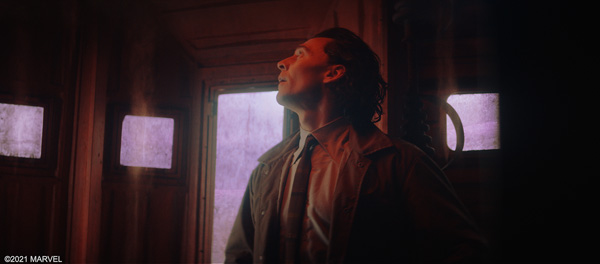
When the story shifts to Lamentis, a moon devoted to mining, the Fuse team was responsible for the interiors of a tent and a cabin where Sylvie and Loki are sheltering from a shower of meteors, and for everything that can be seen of the moon’s environment through the windows. Compositing Supervisor Jeremy Renteria led his team’s work on the tent interior, involving matte painting set extensions and clean-up of specific sections of the practical set. Elements of Sylvie and particularly Loki needed a fair amount of refinement for precise integration into the final, nuanced lighting.
“For the views through the windows, we built 3D set extensions representing the surrounding quarry cliffs, with their inherent atmospheric lighting and depth-of-field integrations applied later in compositing. The environment also included large incoming meteors seen striking the ground outside and exploding. For these, we used a shared cached simulation from another studio and ran further simulations ourselves to create meteors impacting with debris, to achieve the necessary dynamics for specific shots,” Wayne said.
Essential Dynamics
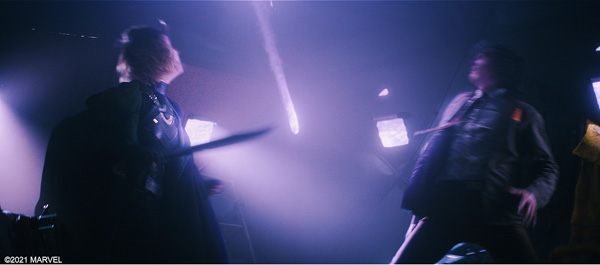
“A 3D particle simulation was also our approach to the essential dynamics of a meteor that penetrates the roof and is seen falling between Loki and Sylvie, quite close up as it impacts and explodes on the ground. Once integrated into the scene and rendered, as always, compositing was essential for the final integration pushing the final appearance to approval.
“A special component of our Lamentis work involved subtle atmospheric dynamics inside the cabin that we created as dust simulations in Houdini. These effects relate to the actors entering the cabin, bringing dust in from outside, and again when a larger meteor nearby shakes the cabin, and dust falls from overhead. As Loki follows Sylvie out of the cabin, he appears to walk through a plume of dust, leaving a wake created with an interactive fluid dynamic simulation caused by his motion.” fusefx.com


















